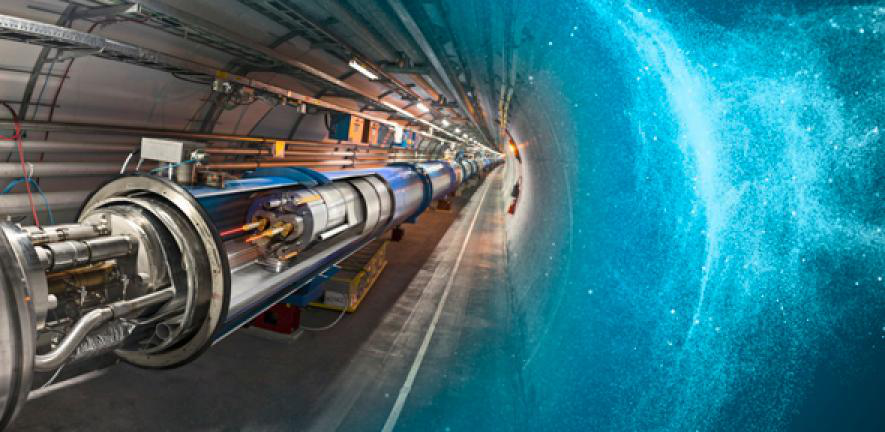Conveners
Parallel Session III, Astro-Particle
- Andrew Chen (University of the Witwatersrand)
- Mourad Telmini (University of Tunis El Manar)
At energies approaching the Planck energy scale $10^{19}$ GeV, several quantum-gravity theories predict that familiar concepts such as Lorentz symmetry can be broken. Such extreme energies are currently unreachable by experiments on Earth, but for photons traveling over cosmological distances the accumulated deviations from the Lorentz symmetry may be measurable using the Cherenkov Telescope...
A neutron star is one of the possible end states of a massive star. It is compressed by gravity and stabilized by the nuclear degeneracy pressure. Despite its name, the composition of these objects are not exactly known. However, from the inferred densities, neutrons will most likely compose a significant fraction of the star’s interior. While all neutron stars are expected to have a magnetic...
The classical Einstein equations in 2+1 dimensions have a black hole solution with a negative cosmological constant. Its solutions are asymptotically anti-de Sitter rather than asymptotically flat. In the context of f(R) gravity theory, we attempt to investigate the thermodynamics of non-rotating Banados, Teitelboim, and Zanelli (BTZ) black holes. The Lagrangian will be modified due to the...
The spin zero, very light bosons like scalar (dilaton) and pseudoscalar (axion) collectively grouped into the term axion like particle (ALP). Dilatons are postulated in extended theory of standard model of particles to cure the scale invariance of the field theory while the axions have been introduced to resolve the $U_{A}(1)$ anomaly in Quantum field theory. These ALPs also show their...
The time profile of neutrino emissions from core-collapse supernovae contains unique information about the dynamics of the collapsing stars and the behavior of particles in dense en- vironments. The observation of neutrinos from the SN1987A supernova, in the Large Magellanic Cloud, marked the beginning of neutrino astronomy. To date, no other supernova neutrino obser- vation has been made. It...
Dark matter is believed to constitute the majority of the matter content of the universe, but virtually nothing is known about its nature. Physical properties of a candidate particle can be probed via indirect detection by observing the decay and/or annihilation products. While this has previously been done primarily through gamma-ray studies, the increased sensitivity of new radio...
Gamma rays have high energy hence they are significantly used in irradiation of food items, diagnosis in nuclear medicine, tracing for radioactive substances like thorium, radiotherapy, sterilization of medical equipment, and among others, the detection of illicit trafficking of radioactive material across international borders. However, gamma rays also pose great danger to individuals working...
Studying the femtoscopic correlation of elementary particles resulting from heavy-ion collisions introduces an identification of the particle's space-time characteristics after the collision, in addition to the determination of how strong particles can interact. In this study, I try to present a femtoscopic analysis of particles with identical charges to check the effect of mass on the...
We investigate the behaviour of particle emission spectra in the large-$x$ region following a rigorous implementation of the kinematic constraints in the simpler framework of a scalar field theory. We find that the small-$x$ kinematic constraints in the simpler theory are identical to those implemented in sophisticated QCD-based energy loss models, but that the exact large-$x$ kinematics are...
We study the azimuthal decorrelation $\Delta \phi$ for di-jet production that promise to reveal important information on perturbative and non-perturbative QCD dynamics. This observable has been measured by the H1 collaboration that employed the $E_{t}$-weighted recombination scheme whereby our observable is continuously global and sensitive to soft and/or collinear emissions in the...
We compute the in-medium jet broadening to leading order in energy in the opacity expansion. At leading order in $\alpha_s$ the elastic energy loss gives a jet broadening that grows with $\ln E$. The next-to-leading order in $\alpha_s$ result is a jet narrowing, due to destructive LPM interference effects, that grows with $\ln^2 E$. We find that in the opacity expansion the jet broadening...

